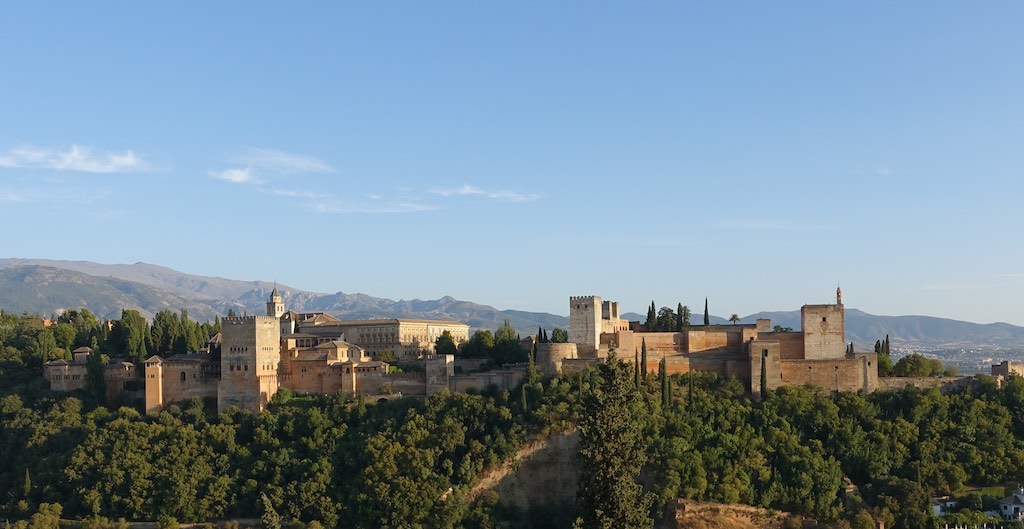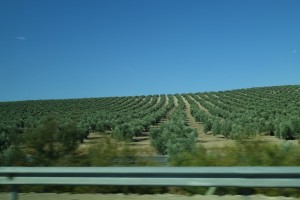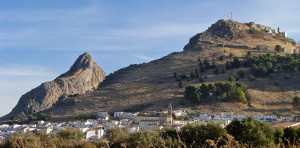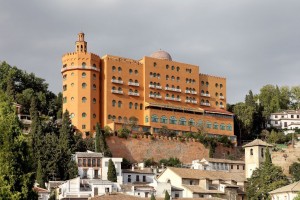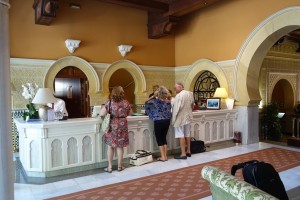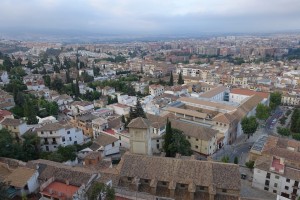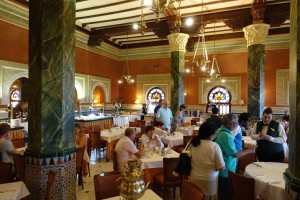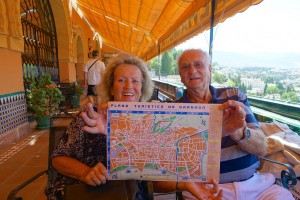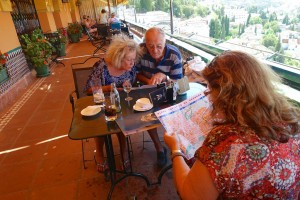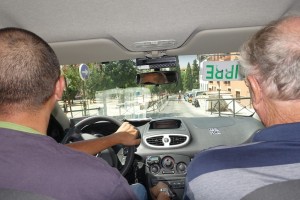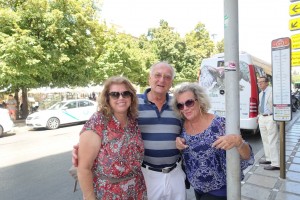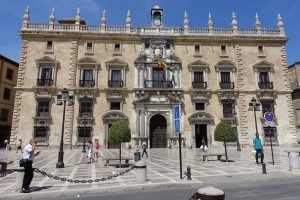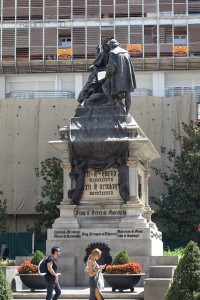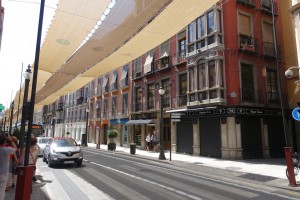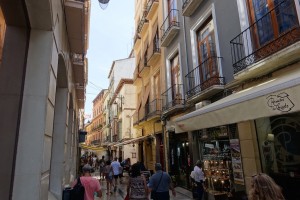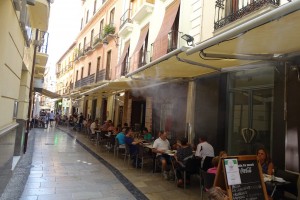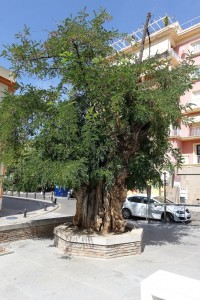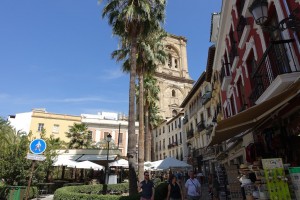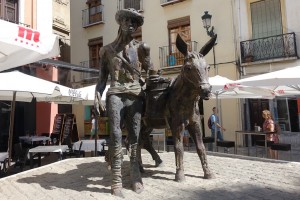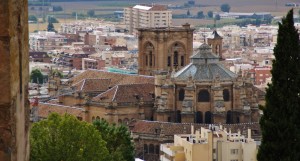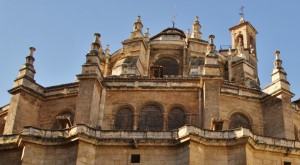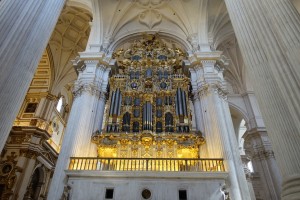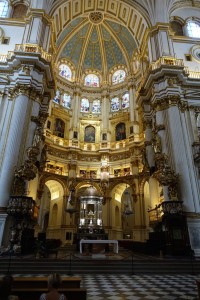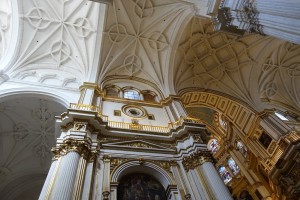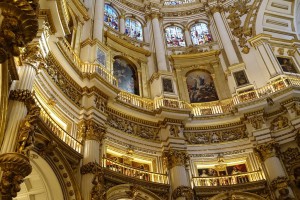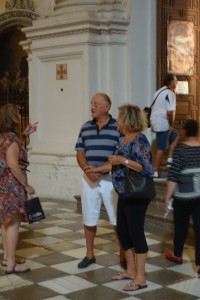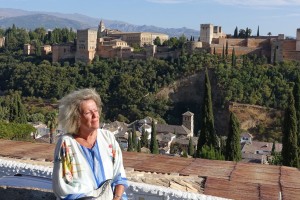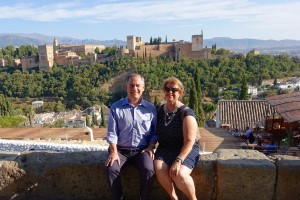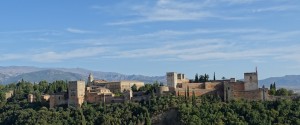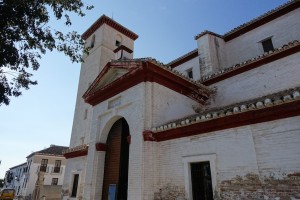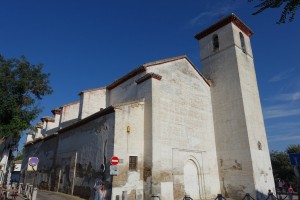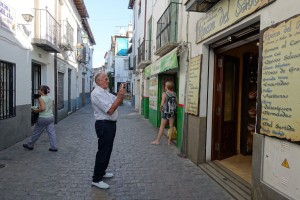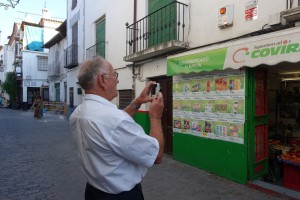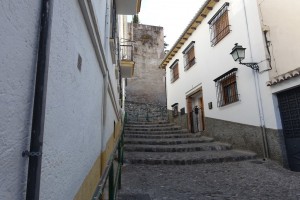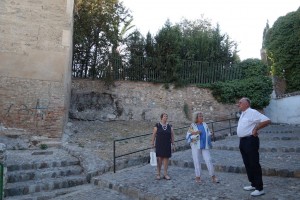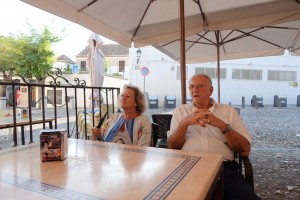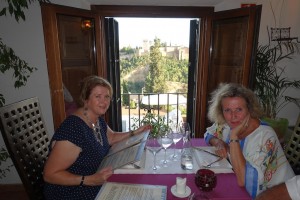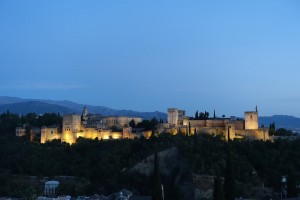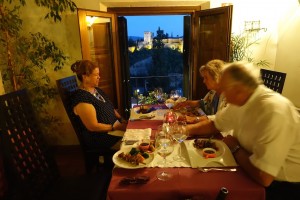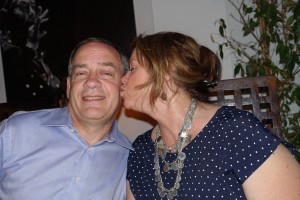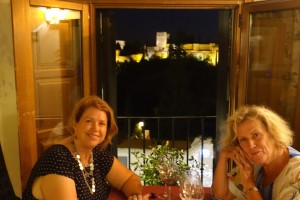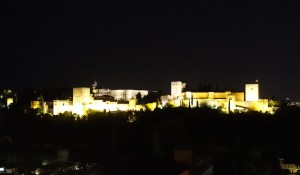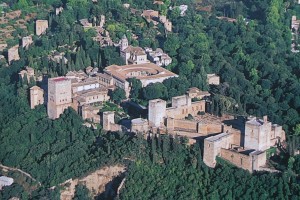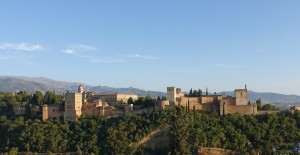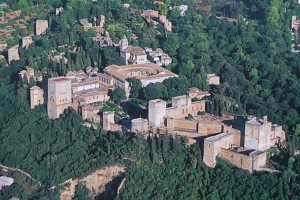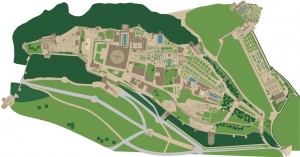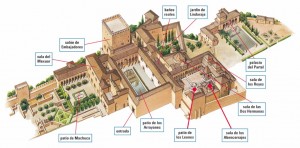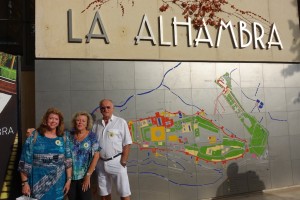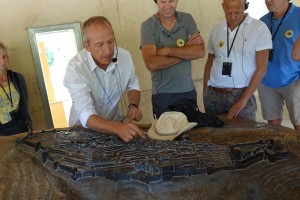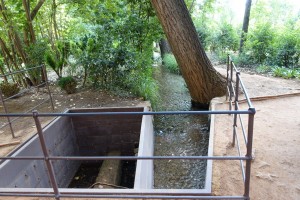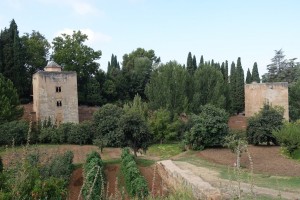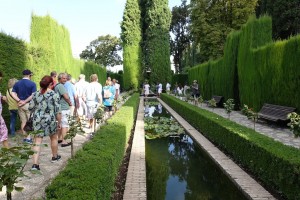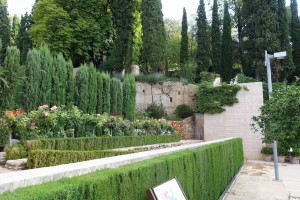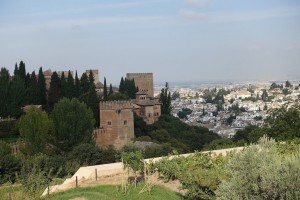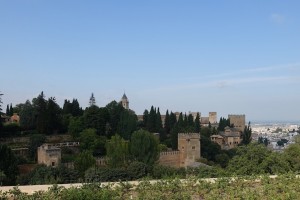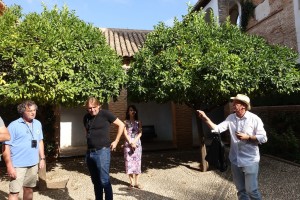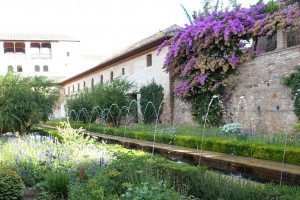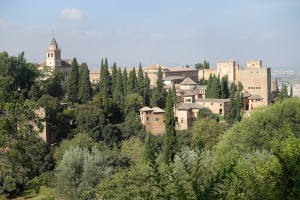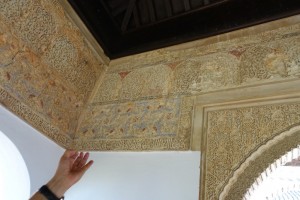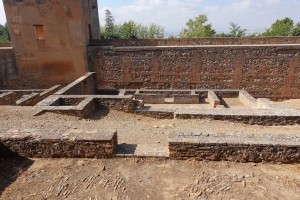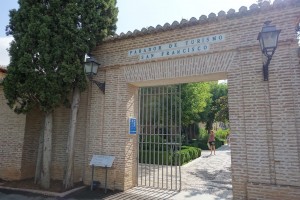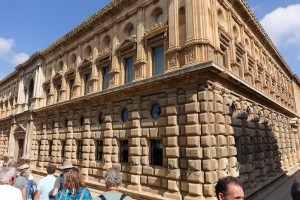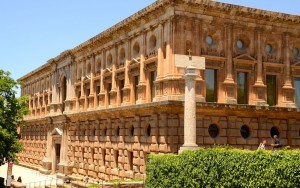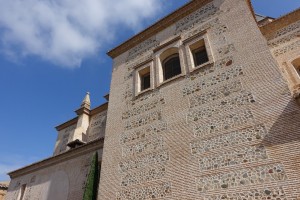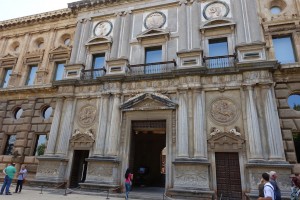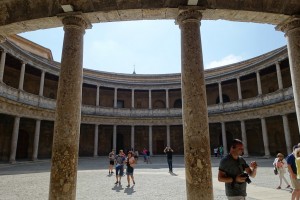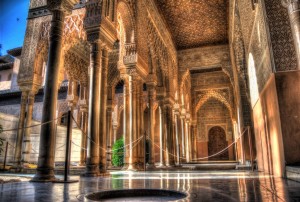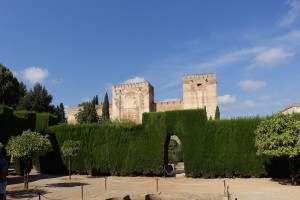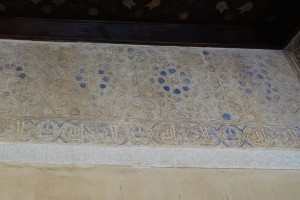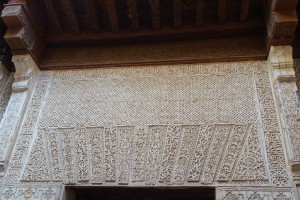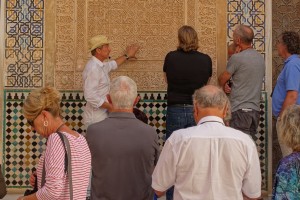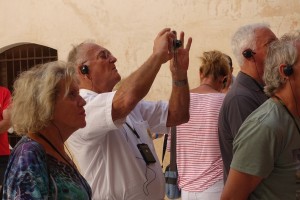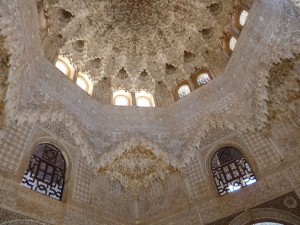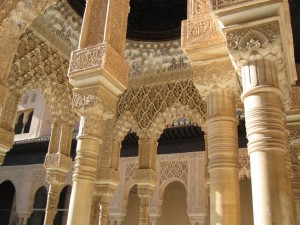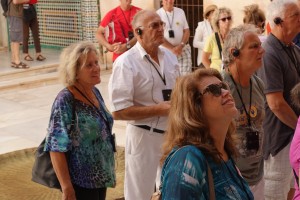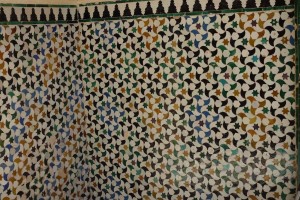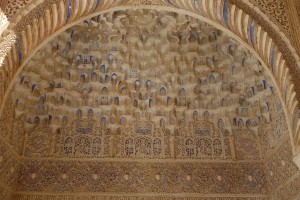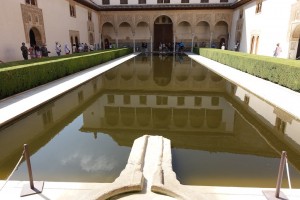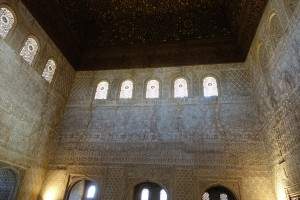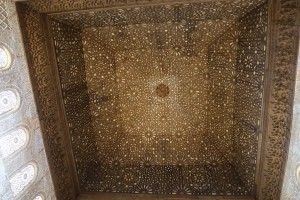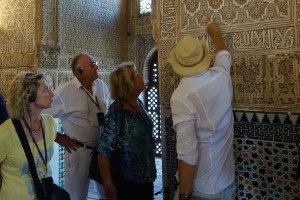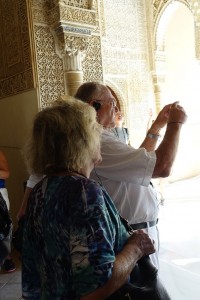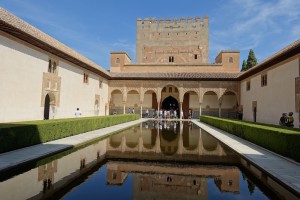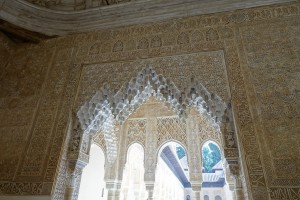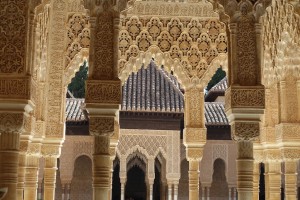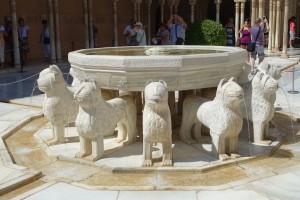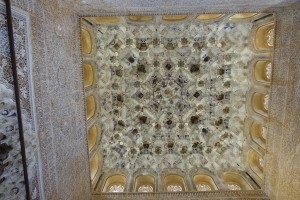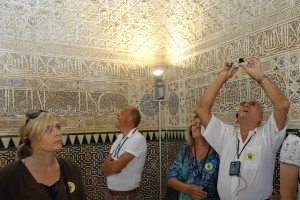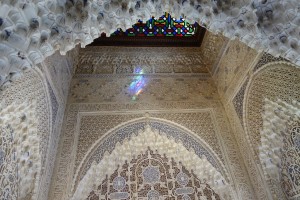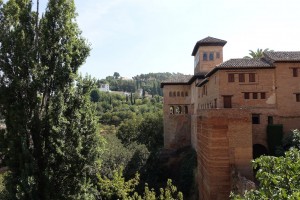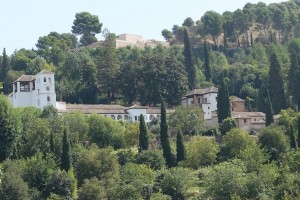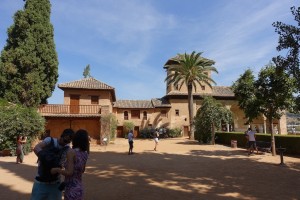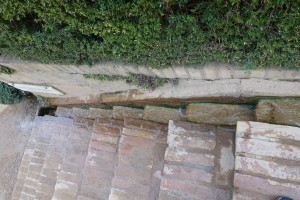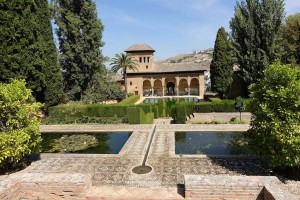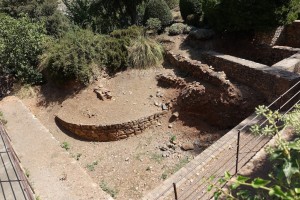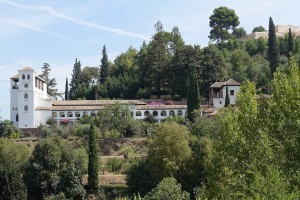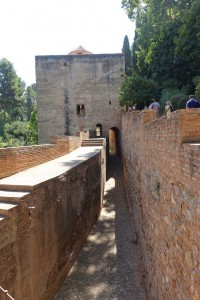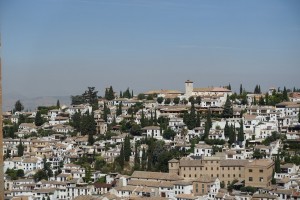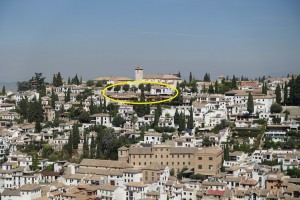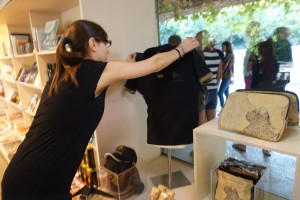Wed Sept 2
Granada
We rendezvous at 8:45 for breakfast and then load up and head to Granada. This is supposed to be another relatively short drive. We have some interesting challenges with the GPS as it didn’t have the latest roads.
We drive past a charming village on hillside overlooking the highway. I wasn’t quick enough to get an pictures and the ones online were not good enough to do it justice. We find out that it’s called Archidona and that it has been entered into photography contests for the most charming village in Europe. Perhaps on a future visit we will go back and check it out.
The historic section of Granada restricts traffic access. You need a pass or have to have your hotel call in your license number to prevent you from getting a ticked. We drove into restricted area by mistake as our hotel is situated so it can’t gain clearances for its guests.
Gertrud thought she made a reservation for us to stay inside Alhambra as the hotel is called Hotel Alhambra Palace. It’s not a parador (there is one inside with only 40 rooms) but it is very close. The hotel was built in 1910 (obviously renovated) and is built into hillside with a great panoramic view of Granada neighborhoods (but not the Alhambra). We upgraded for view rooms for 43 Euros.
We had to wait for check-in so we had some refreshments on the Café’s back balcony. It was a great view, but windy and the drinks were more expensive than we had experienced in previous locations.
We headed for downtown Granada via taxi. We walked around and toured, but most places were observing siesta and it was warm. We toured the tapas district but didn’t partake. We waited until we found the cathedral and then had tapas in its shadow. We waited for Granada Cathedral to open (2nd largest Renaissance in Spain). It was not as large as the gothic ones, but was still impressive.
We taxied back to the hotel to prep for dinner. We then took a taxi to the Moorish quarter and got dropped off near the Plaza Mirador de San Nicholas. The St. Nicholas church that is part of the plaza is a visible landmark (as seen in tomorrow’s pictures) and is under restoration. St. Nicholas is saint born in Turkey whose parents died living him quite wealthy. He gave all of his money to the poor and led a life of poverty. This St. Nick is the start of the Santa Claus tradition.
Mirador (viewpoint) is sometimes referred to as one of the most romantic spots in the city. It had lots of people (especially couples) and dogs just hanging out and enjoying the atmosphere. We then walked around the Moorish quarter until our reservation was up at 7:30, which is when the restaurant opens (true to Spanish customs).
On one side of the mirador is the restaurant in which we had a reservation, Estrellas de San Nicholas. It had a good reputation for views and meals. It has a terrace ontop (exposed to the elements) and at our level we had a beautiful window view of the Alhambra. As seen below we started at daylight and went through dusk until night. The meal was quite good with great presentation and several dishes were excellent.
[14,096 steps]
Thurs Sept 3
Granada / Alhambra Continued
Gertrud made arrangements for a guided Alhambra tour in English. Alhambra and Generalife is a remarkable place worthy of putting on anyone’s “bucket list.” Here are some Alhambra links: wikipedia, info1, info2
Our tour guide was named Daniel. I think his English had French accent. We found it he was born in Sicily but considers himself from Rome. He spoke Spanish and French. It seemed his Arabic and Persian were remarkably fluent. In fact, he often read the poetry on the walls of Alhambra and Interpreted it for us.
Generalife is garden environment designed to honor god. Gardens, plants, and nature are very important to the Islam culture. Interestingly, they were able to study the soil and find seeds from the time of the Moors use of the gardens and do DNA analysis to plant a similar garden.
Alhambra is the only palace standing from Middle Ages period so it yields incredible history. It was the cradle of European Islam during its Dark Ages. It was tolerant of other religions, and was on the forefront of science, math, water engineering. Water engineering was needed to dam the rivers in the mountains and channel water to Alhambra and Generalife for the gardens, running water, and the sewer system.
Alhambra was impenetrable. It was on a mountain and the walls were doubled up with a horse trail between to easily apply reinforcements and to resupply the dropping boulders weapons. However, when the Christians surrounded it after defeating Cordoba and the rest of the Moorish empire in Spain it was decided the war was lost. So the sultan negotiated with the Christians and would surrender if allowed to go into exile with his treasure and if his people would be spared and permitted to practice their religion.
Unfortunately, the Christians ultimately reneged expelling the Jews and later forbidding the practice of Islam punctuated be destroying all of the libraries and spiritual materials of the Islams. In fact, this was the start of the Inquisition. It’s heartbreaking to think of the loss to our culture of this destruction.
Alhambra itself would have been destroyed but it was so absolutely beautiful that the Christians decided to keep it and try to adapt it for their purposes. In fact, Isabel and Ferdinand initially wanted to be buried there.
At the end of the tour I bought the last polo shirt, taking it off the mannequins back. We taxied back to the hotel and managed to GPS back to the highway. We will find out if we escaped the fine for traversing a slice of historic streets.
View the Full SmugMug Gallery:
Navigate Website Menus to: Resources > SmugMug Gallery > Trips > Spain 2015; or
Use the Following: link
Gallery of Photos for Part 4
Share this Post
